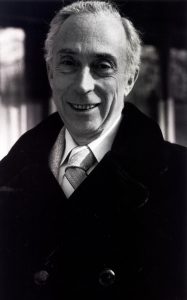On the Relevance of Quantum Concepts to Dreaming Consciousness
By Montague Ullman, M.D.
(Date unknown, between 2001-2005)
In the past two decades there has been considerable focus on the effort to reach a deeper insight into the nature of consciousness via quantum mechanics. There has been very little attention paid, however, to the fact that we are endowed with two naturally recurring forms of consciousness, one experienced in the waking state, the other in the course of sleep. Waking consciousness and dreaming consciousness are intimately related but quite different in the way they are experienced. What they share in common is the continuing mystery of their connection to their neurophysiological substrate. Fred Alan Wolf is one of the few physicists who have written extensively about this mystery (Wolf, 1994).
Despite Freud’s classic volume on the interpretation of dreams and the further contributions of several generations of psychoanalysts since then, the fact remains that the true nature of dreaming consciousness still eludes us. At least it does to me and so I have had to look elsewhere for clues to the unique features of our dream life. It is always a risk for someone to express views outside his own ken. To minimize the risk I have worked only with several of the basic concepts of quantum mechanics in their relevance to the unique features of dreaming. In what follows I will first consider the phenomenological features of these fascinating creatures of the night.
Associated with subcortical arousal mechanisms, dreams have an ancient phylogenetic origin, the physiological components of which we share with other mammals. They address two specific needs during sleep, both of which are served by the REM stage and associated imagery. One facing outward is the need to build into the sleeping state periods of cortical arousal where, while ordinary stimuli remain dampened, there is a continuing alertness to certain external stimuli singled out for their special significance. A mother asleep keeps an auditory channel open to the slightest sound of her sleeping infant.
The other need points inward and calls for versatility and flexibility in response to the changing aspects of waking experience. In the case of other mammals, both Evans (1983) and Winson (1986) have suggested that the REM cycle provides the sleeping organism with the opportunity to review and revise its behavioral repertoire to meet changing circumstances. In meeting both of these needs the REM-imaging stage of sleep may be looked upon as a genetically driven survival mechanism.
Dreams differ from waking thought in both form and content.
Form
Dreaming is primarily a sensory experience, mostly visual but occasionally involving other sensory modalities. In the course of our evolution as a species we have retooled a primitive imaging system into a remarkably effective way of calling our attention to feelings and concerns surfacing during the REM and occasionally other stages of sleep. Freed from the waking constraints of time, space and causality, and calling upon our capacity for abstract thought, the imagery that results goes beyond a photographically literal representation to convey its message metaphorically. Dream images are fundamentally metaphors in motion. Other figurative modes may come into play, but the visual metaphor is the dream’s most characteristic feature. Depending on the issue involved, the resulting imagery can be obvious in its metaphorical meaning or so elaborately crafted that it takes work to spark across the gap between image and waking reality. While the meaning may not be immediately apparent, the intent is not to disguise nor censor the feelings that are arising. In the absence of waking sensory input we revert to a primitive imaging mode and transform it, quite creatively, into an expressive rather than concealing mode of self-communication.
Content
The content of dreams is as broad as the range of issues that concerns us from day to day. They vary from the trivial to the awesome. The feeling residues that set the dreaming agenda are drawn from any of the four dimensions of our existence — the biological, the psychological, the social, and what have been variously referred to as the cosmic, transpersonal or spiritual.
The Biological: Bodily changes can make their presence felt in a dream. Their intensity, such as the need to urinate, may crowd out other concerns. More interesting, however, is the fact that while dreaming our sensitivity to change is so great that incipient organ pathology may register in a dream before there is any awareness of it in the waking state. We seem to be in a change-detecting mode while dreaming regardless of whether a significant change is arising from within or without.
The Psychological: As adults we face the task of undoing developmental constraints while at the same time contending with ongoing social constraints. These limitations take their toll, a toll we are often unaware of until they surface in our dreams. They set in motion the most consistent features of our dream life, namely, the way memory, creativity and honesty come into play to surmount disorder. Recent feeling residues connect up with past residues in a way not easily accomplished while awake. More relevant information becomes immediately available. The search is not simply for origins but, equally important, is the uncovering of resources within us to cope with the situation. Our innate creativity crafts imagery that speaks so elegantly and directly to whatever it is that is coming into being at the time. It is as if there is within each of us an incorruptible core of being that displays our predicament in a profoundly honest way.
The kind of honesty I associate with dreaming consciousness is not meant in some abstract moral sense. It is contextual and rooted in the fundamental reality that truth is more enabling than self-deception. Our ability to see truth is contextual in the sense that at any given moment what is exposed to view in a dream is contingent on the individual developmental and social constraints that are still operative. These constraints limit but can never completely block our nocturnal ability to discern the authentic from the spurious. We possess a unique inner camera, one with an aperture that, like all cameras, opens more widely in the dark. This camera, however, is equipped with an ethical aperture that reveals a bit more of the truth about ourselves than we are aware of awake.
The Social: Our dreams have social referents as well as personal referents. The former point to unsolved tensions in society that have been internalized in one form or another. We have an inordinate ability to resort to self-deception rather than face up to certain painful social realities. The various issues that continue to pervade the social order seep into our unconscious despite conscious intent to the contrary. In the United States racism is still very much in evidence.
The Cosmic: The last dimension has no generally agreed upon designation. I prefer the term cosmic because this is the aspect of our being that goes beyond the biological, beyond the psychological, and beyond the social, to signify our relatedness to the mystery of our existence in a still mysterious universe. Transcendental, transpersonal and spiritual are terms which would serve equally well. Organized religion has attempted to deal with these mysteries but in its evolution has added to the many lines of cleavage that continue to fragment the unity of our species. Our feelings and concerns in this dimension do at times come through in dreams that have a numinous quality of peace, transcendence, and an almost mystical feeling of connectedness. Such dreams are often ineffable in the beauty and wonder they convey.
The Function of Dreaming Consciousness
There are almost as many functions attributed to dreaming as there are writers on the subject. Their points of view include the clinical, neurocognitive, neurophysiological, and the transpersonal and the spiritual. Clinically the movement has been away from Freud’s emphasis on wish fulfillment and dreams as the guardian of sleep toward a generally more adaptive view of the dream beginning with Jung’s compensatory function. Neurocognitive approaches emphasize information processing and the working through of recent experience in the interest of memory storage. Neurophysiological theorists, while contributing to our knowledge of the neural substrate, tend to be dismissive of the creativity and psychological richness of our dream life. The transpersonal and the spiritual take us into realms beyond ourselves.
The values of a society have much to do with the functional significance of dreams. Awake and facing outward, we live in a society where a given set of values are already in place. Facing inward while dreaming we bring an evaluative process into play that reveals in a more consistently honest fashion the felt impact of the current realities impinging on us. The discrepancy between the waking view and the metaphorical portrayal of the situation in the dream creates the opportunity for emotional growth. Dreaming, however, is a nighttime activity. The remembered dream has to be “socialized” for its full informative potential to be realized. That means work has to be done, often requiring collaborative help, to go beyond the ordinary waking view of the self. The technique of learning how to help a dreamer accomplish this task is available to anyone interested (Ullman, 1996). Dreams are useful tools in therapy but dreaming is universal and should be universally accessible. Truth is healing, however we come by it.
Despite the enormous amount of information about dreams we have gathered over the past century, our dream life is still enshrouded in mystery. Why do we have the ability to tell a story about our lives in a way that dispenses with our ordinary notions of time, space and causality? Current approaches to dream function take the unique features of dreaming consciousness as a given. Expressing dreams as a regressive way of thinking, for example, fails to do justice to their creative and healing potential. In seeking clues to this mystery I have had to go beyond my own field of psychiatry to learn more about this unique form of consciousness. In what follows I call attention to its analogy to some of the key concepts of quantum mechanics, namely, complementarity, interconnectedness, the linkage of the observer and observed, and non-locality. Speculative as this may be, it may have the virtue of opening up a different perspective on the still mysterious nature of dreaming.
Complementarity
We do not know what an electron is when it is not being measured. What we do now is that it has a dual nature depending on how we go about measuring it. Under one set of circumstances it becomes manifest as a particle. Under another set of circumstances it appears as a wave. This hidden unity of opposites is known as complementarity. It is also an apt term to describe the dual nature of consciousness. Awake we are in the particle mode facing a world of discrete objects. Asleep and dreaming we are coping with the internal resonant wave-like feelings seeking to embed themselves in symbolic imagery. Both states, while experienced in qualitatively different ways, are derivative of a unity. They are complementary. Both are necessary for a complete description of the individual at any given moment. To the extent that one is in focus the other is not.
More specifically, the two different forms of consciousness reflect the unique and paradoxical predicament we are in. We are one with the material fabric of the world and at the same time capable of observing that world, reflecting on it and interacting with it. Awake we function in a world characterized by its discreteness and patterning. Asleep and dreaming we shift to a more diffuse imagistic portrayal of residual feeling tones. Awake, the feeling tones that later surface in dreaming consciousness are dimly felt in a manner akin to a Greek chorus. The latter registers the background dissonance between a particular conscious response to a given experience and the seeming unawareness of its actual felt impact. Asleep and dreaming there is a figure-ground reversal highlighting the feelings involved while the waking ego is assigned to a more reactive role.
Interconnectedness
I regard dreaming consciousness as concerned with the state of our connection to our past and to others in the interest of our survival as a species (Ullman, 1990). Congenial to this with regard to consciousness generally is the view of the biologist Barlow (1980) who notes:
“Consciousness is not a property of a brain in isolation but is a property of a brain that is and has been in communication with other brains…. I shall suggest that consciousness … is Nature’s method of making humans behave cooperatively.” (p. 82)
This implies and I believe correctly that consciousness, awake or dreaming, is contextual in nature and that we lose sight of this in our assumption that it is our unique gift to do with as we want. The capacity to love is the most coherent way of relating to the context. When that capacity is impaired, efforts at healing are set in motion in a way similar to the efforts at repair when our physical system is damaged in any way. It is in this sense that dreaming consciousness is a natural healing system. Healing occurs by exposing impediments to connectedness and the exploration of the coping resources available. Just as we are not in control of our own natural healing potential in response to trauma, infection or other sources of impairment, dreaming is an unconscious effort at healing, biologically enforced and spontaneously set in motion. The result is a deeper sense of connectivity to our own past and to others.
The Observer and the Observed
Quantum mechanics has brought to the fore the interrelatedness of the observer to the phenomena under observation. This is known as the “measurement problem” and is still a very mysterious aspect of quantum theory.
Awake our observing egos, taking our discreteness as a given, interact in ways that are at times coherent with the underlying reality of our interconnectedness and at times are not. Asleep and dreaming there is a radical shift in the observer role. The reality that now comes into view is spontaneous and unsummoned. We remain an observer but are now observing a scenario not of our own conscious making. There is, in effect, an actual merging of the observer and the observed as the dream context unfolds. Freed of temporal and spatial constraints, having a causality of its own, the feeling residues of the waking context come into full view in a metaphorical narrative. By changing our focus asleep we have changed the “measurement” arrangement and arrive at different views of a unitary entity.
Non-Locality
The term non-locality refers to the instantaneous transfer of a signal from one place to another through no known physical means. Non-locality at the quantum level has been subject to experimental proof but still remains a baffling mystery. Non-locality at the macro-level as cited in dreams has been supported by the experimental work in parapsychology and also remains a quite mysterious happening. Whether we are catching glimpses of one mystery or two different ones remains to be determined.
My own interest in telepathy began in the course of psychoanalytic practice when a patient of mine would report a dream containing striking and non-inferential information of concordant events in my own life. This eventually led to experimentally controlled studies using the REM sleep-monitoring technique resulting in statistically significant findings with regard to both the occurrence of telepathic and precognitive dreaming (Ullman, Krippner, Vaughan, 2001).
As already noted are the strange things we do with time and space in our dreams as we impress them into metaphorical service. In the case of time the instantaneous condensation of past and present might be looked upon as a kind of subjective non-locality. The paranormal dream, on the other hand, suggests the possibility of an objective non-locality by spanning across space in the telepathic dream and across time in the precognitive dream. The information picked up has an objective source whether it is literally or symbolically depicted in the dream.
The work of the late David Bohm stimulated my interest in the connection between the mystery of dreaming consciousness and his approach to the still unsettled issues in quantum theory. His concept of the implicate order as a seamless whole out of which an explicate order of discreteness arises is relevant to the emphasis I am placing on interconnectedness and dreaming (Ullman, 1987). With regard to dreaming, it is as if we become part of this implicate order as we take leave of the world of discreteness during sleep.
In sum: The unique features of dreaming consciousness deserve a bit more attention than they are currently receiving in the ongoing discourse on the nature of consciousness. Among these unique features are an intrinsic honesty providing the opportunity for moral growth in the individual and to interconnectedness in the interest of survival of the species.
The unique features of the dream were further considered in their analogy to certain key aspects of quantum mechanics, namely complementarity, interconnectedness, the contextual linkage of observer and observed, and non-locality.
References
Barlow, H.B. (1980). Nature’s joke: A conjecture on the biological role of consciousness. In B.D. Josephson and V.S. Ramachandran (eds.), Consciousness and the Physical World. New York: Pergamon Press.
Evans, Christopher (1983). Landscapes of the Night. New York: The Viking Press.
Ullman, Montague (1987). Wholeness and dreaming, in B.J. Hiley and F.David Peat, eds., Quantum Implications.
Ullman, Montague (1990). Dreams, species-connectedness, and the paranormal. Journal of the American Society for Psychical Research 84, April 1990.
Ullman, Montague (1996). Appreciating Dreams. Thousand Oaks, CA: Sage Publications.
Ullman, Montague and Krippner, Stanley with Vaughan, Alan (2001). Dream Telepathy. Charlottesville, VA: Hampton Roads Publishing Co.
Winson, Jonathan (1986). Brain and Psyche. New York: Vintage Books.
Wolf, Fred Alan (1994). The Dreaming Universe. New York: Simon and Schuster.
Montague Ullman
1916 – 2008
Dream Appreciation Newsletter Articles
This site is dedicated for the legacy of Montague Ullman’s dream work, consisting of Ullman’s own writings he wanted to be included in this site.
—-
Top Image By Pixabay
– Come Like Us on Facebook – Check us out on Instagram –
– Sign Up for our Newsletter –



 MONTAGUE ULLMAN
MONTAGUE ULLMAN









